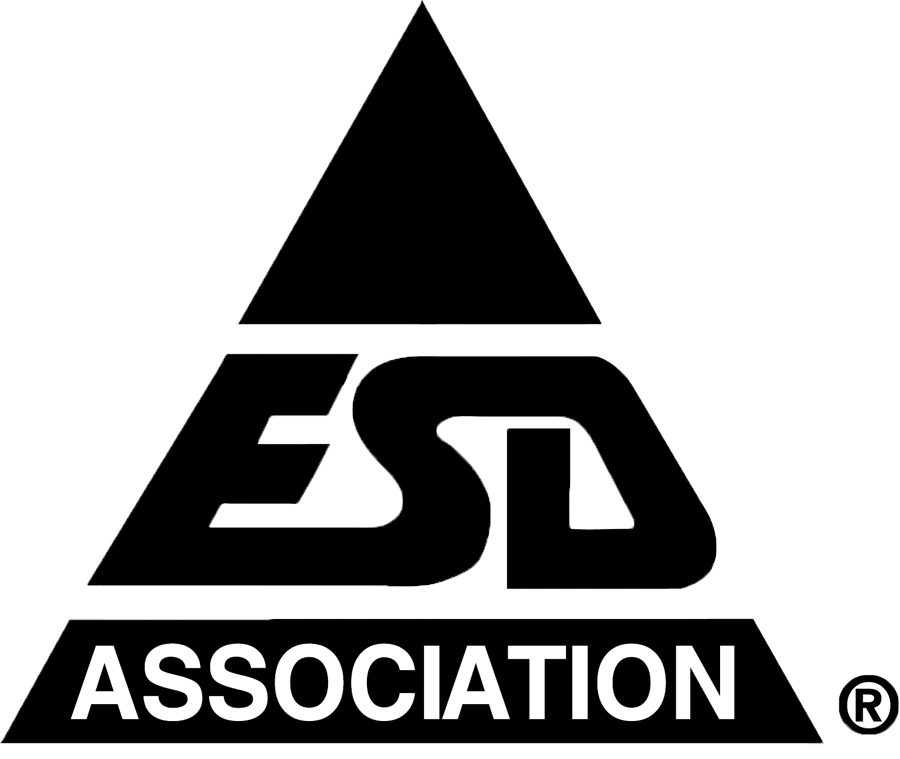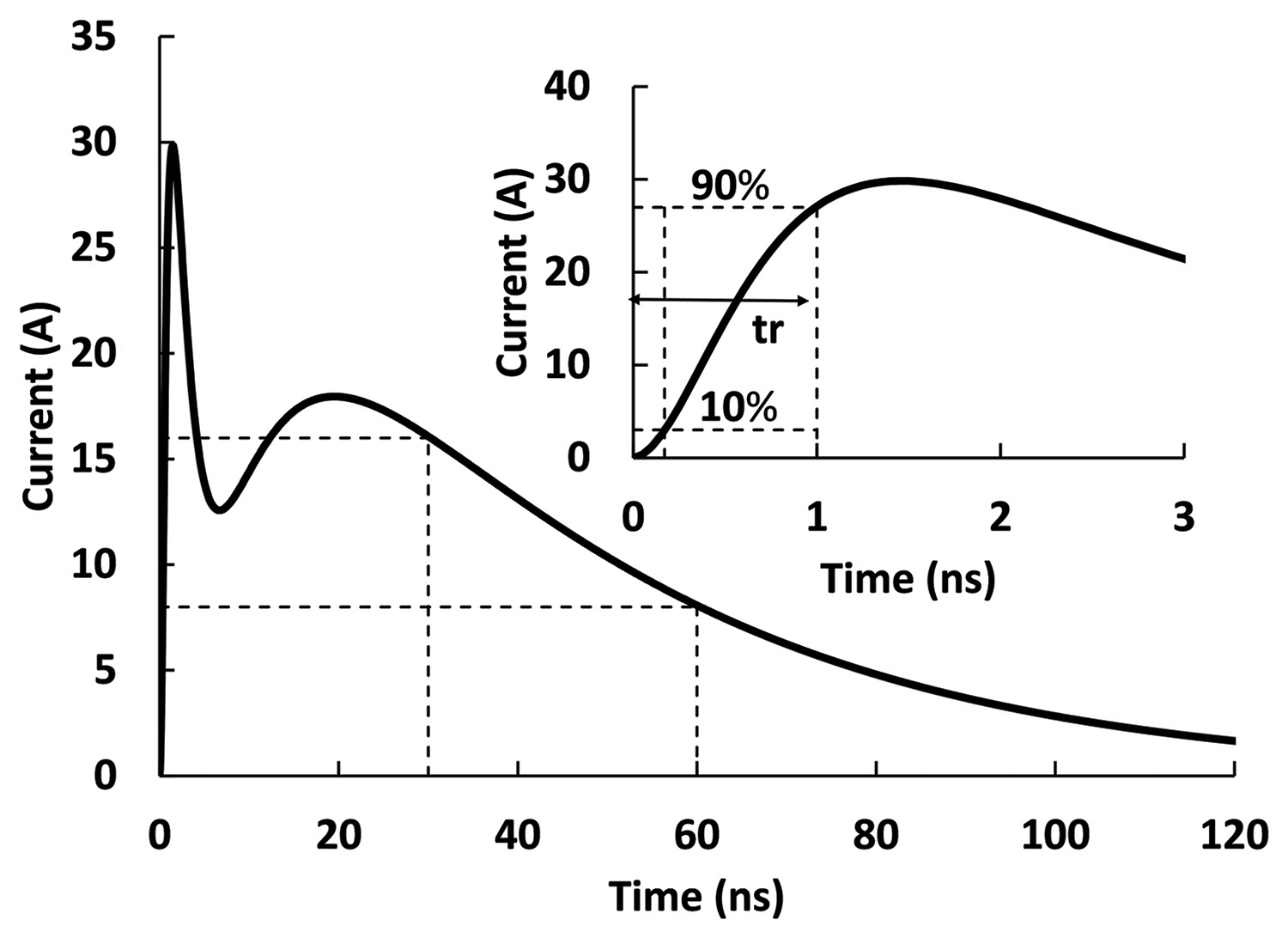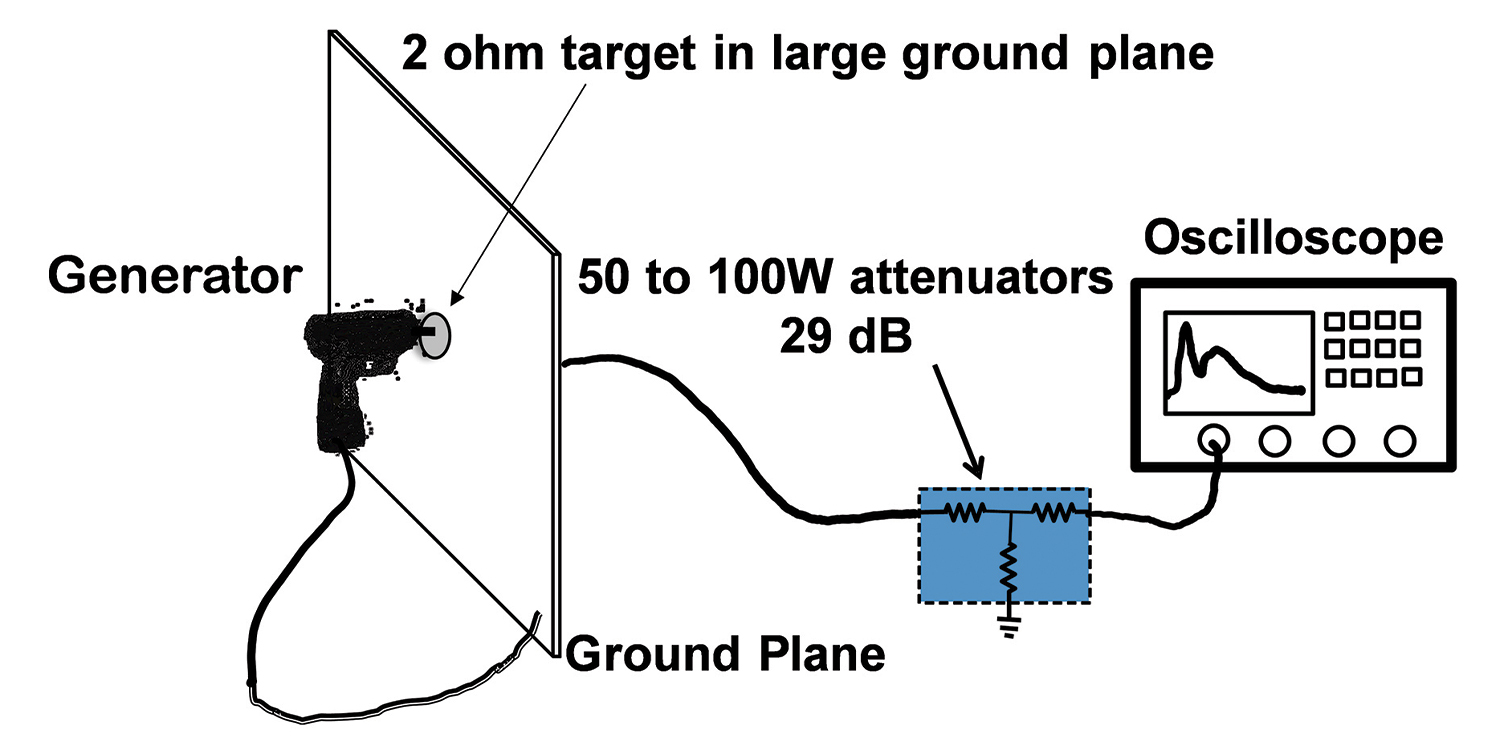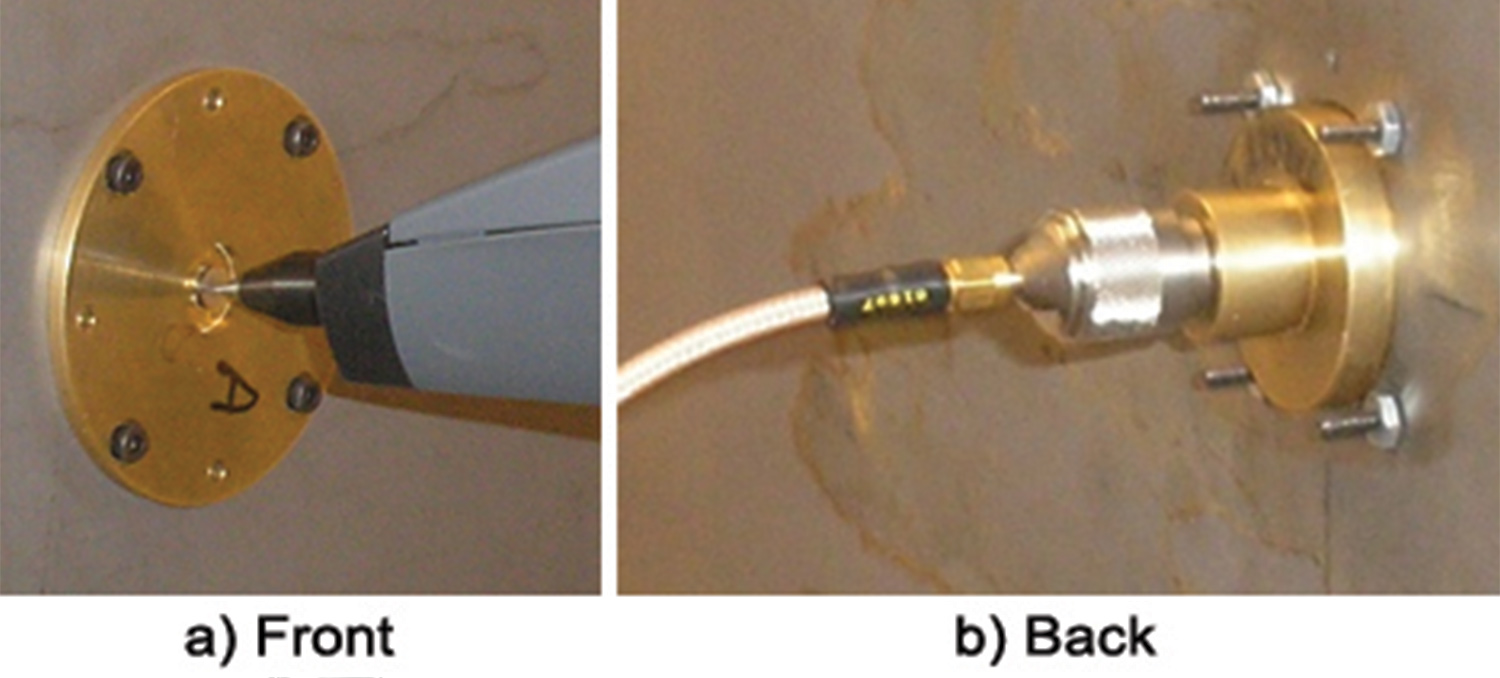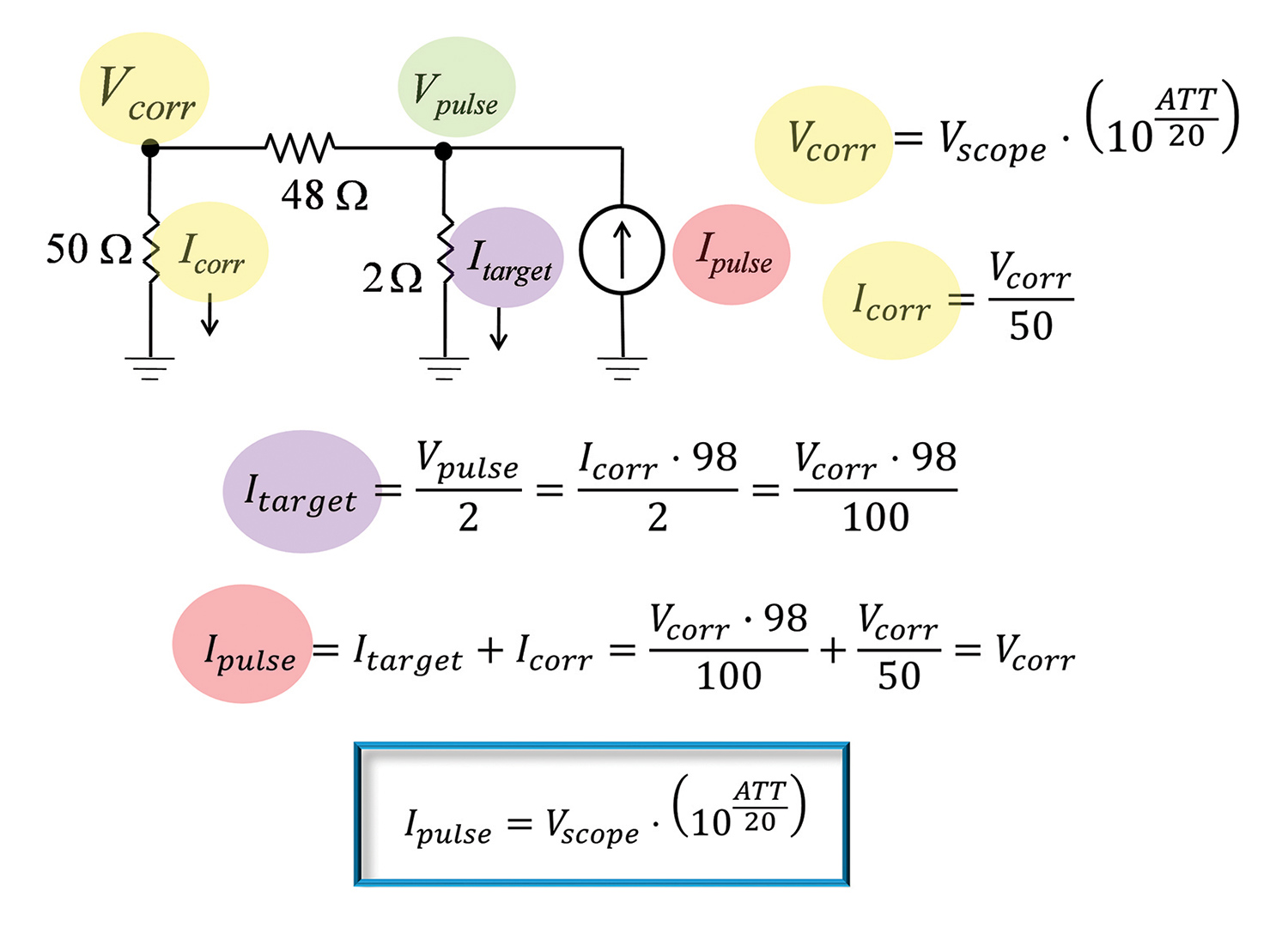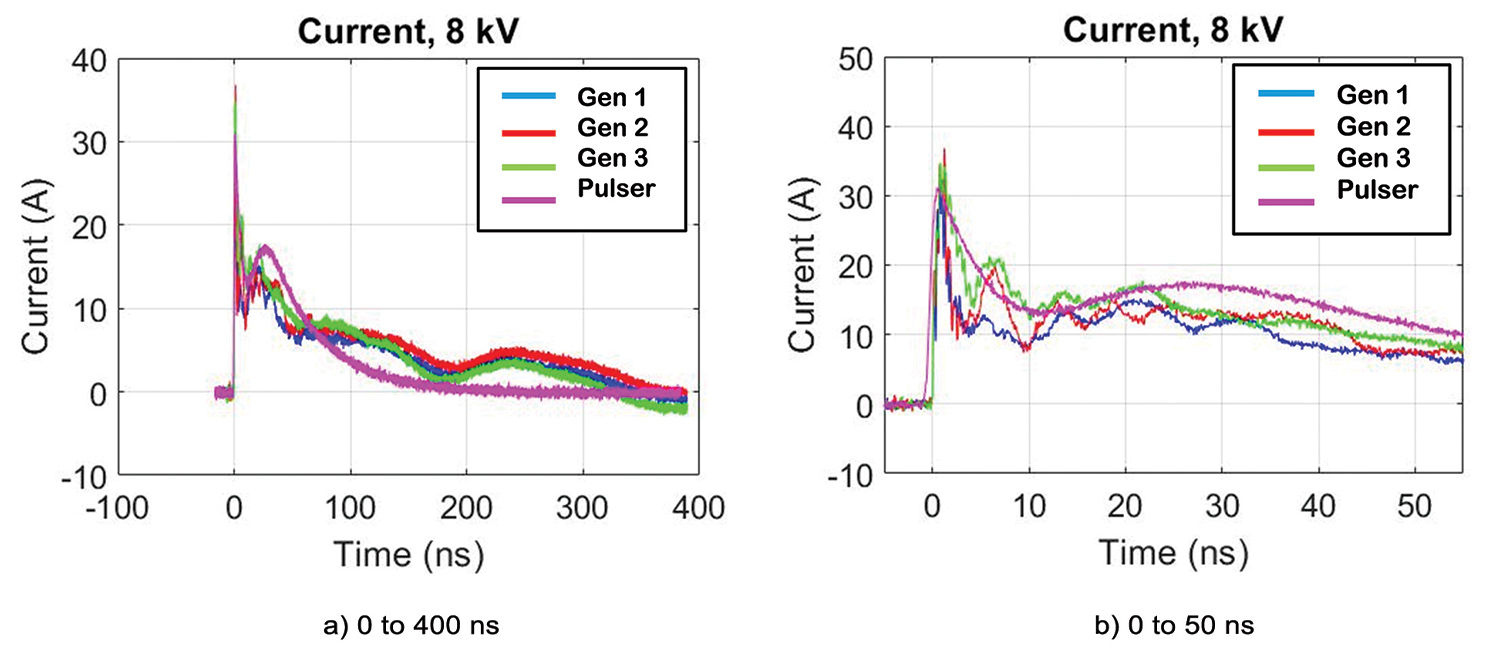his article explores the waveform specifications called out in the IEC 61000-4-2 standard [1]. Verifying that a generator meets this specification requires specific equipment and conversion equations. The setup, data collection, and calculations required to validate equipment are explained here. Waveforms have been captured using the target called out in the standard, often called a Pelligrini target, for three different generator manufacturers and one pulser. These waveforms are analyzed in the time domain to verify the generators were within the standard’s specification. What comes as a surprise is the real waveforms. Waveforms from different generators look very different and it is surprising that they all pass the specification [2].
The spec limits are shown in Table 1. Note that the spec limits are quite wide; for instance, at the 30 ns and 60 ns current, the waveforms can vary by ±30%. The peak current can even vary by ±15%.
The test setup to capture the waveforms is shown in Figure 2 on page 44. It uses a target for the tip of the ESD Generator to contact and thus capture the waveform. This target is seated in a large ground plane; thus, radiated fields will not be captured and are not a part of this study. A faraday cage can also be used to house the oscilloscope.
Figure 3a shows a closeup view of an example target from the front and Figure 3b shows the back of the target with an N to SMA adapter for connection to a high frequency cable.
Figure 5 shows the equivalent circuit of Figure 4 with the input to the attenuator as 50 ohms to ground. Below this equivalent circuit are the calculations to transform the corrected voltage from Figure 5 to pulse current. The target used in this study had 2 ohms to ground and a series 48 ohms connecting to output on the back of the target. Icorr, is effectively the current into the attenuator. This current can then be used to calculate the voltage the generator produces across the 2 ohms to ground which is Vpulse in the figure. This voltage is divided by the target impedance yielding the target current. The target current plus the current into the attenuator is the current in the generator. This is the current called out in the IEC specification. The final equation in Figure 5 shows conversion from the scope data, Vscope, to the generator current, Ipulse.
- “IEC 61000-4-2: Electromagnetic Compatibility (EMC) – Part 4-2: Testing and Measurement Techniques – Electrostatic Discharge Immunity Test,” IEC International Standard, 2007.
- K. Muhonen et. al, “HMM Round Robin Study: What to Expect When Testing Components to the IEC 6100-4-2 Standard Waveform,” EOS/ESD Symposium, 2012.
- K. Muhonen, et al., “Spectral Analysis of IEC Generators for System Level Testing of RF Components,” EOS/ESD Symposium, 2020.

